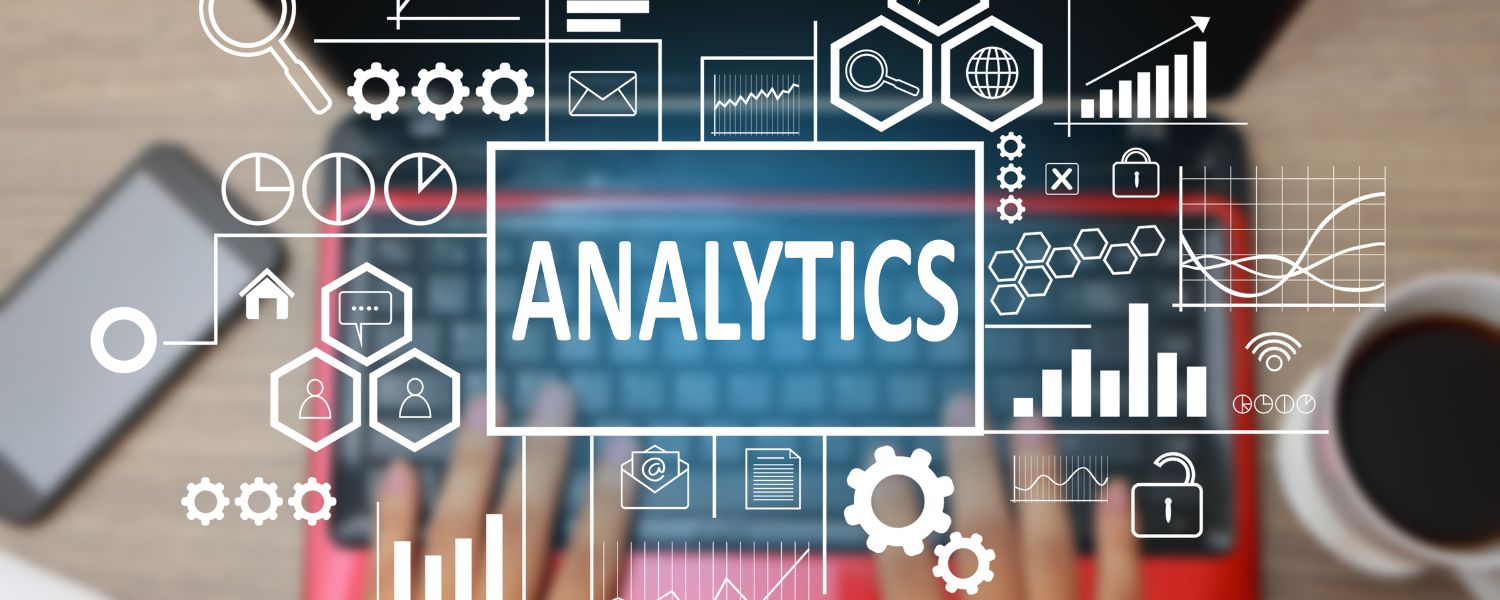As companies increasingly adopt subscription-based models, the need for precise revenue analytics becomes more and more important. In this blog, we explain the significance of revenue analytics, exploring the benefits, limitations, prerequisites, and implementation strategies of and in relation to revenue analytics so that we can assist in empowering businesses to unlock their profit potential. In today's commercial world, optimizing revenue streams is paramount in order for businesses to grow and maximize their profitability.
1. What Is Revenue Analytics?
Revenue analytics encompasses the systematic analysis of financial data to gain insights into revenue generation processes, trends, and performance metrics. It involves leveraging advanced data analytics techniques to extract actionable intelligence from revenue-related data, such as sales transactions, customer interactions, and pricing strategies. By examining revenue patterns and forecasting future revenues, businesses can make informed decisions to drive their profitability and sustainable growth.
2. Benefits of Revenue Analytics
Revenue analytics offers a multitude of benefits for businesses:
Improved Decision-Making: By providing actionable insights into revenue drivers and performance metrics, revenue analytics enables informed decision-making across various business functions, including sales, marketing, pricing, and product development.
Enhanced Revenue Optimization: Through detailed analysis of customer behavior, pricing elasticity, and market dynamics, revenue analytics facilitates the optimization of pricing strategies, upsell and cross-sell opportunities, and revenue streams.
Effective Resource Allocation: By identifying high-value customer segments, revenue analytics helps allocate resources more effectively, focusing efforts on areas with the highest revenue potential and ROI.
Mitigation of Revenue Leakage: Revenue analytics enables the detection and mitigation of revenue leakage by identifying billing errors, fraudulent activities, and revenue inconsistencies.
Strategic Planning: By forecasting future revenue trends and market dynamics, revenue analytics empowers businesses to develop robust strategic plans and adapt to changing market conditions proactively.
3. Limitations of Revenue Analytics
While revenue analytics offers valuable insights, it's essential to acknowledge its limitations:
Data Accuracy and Quality: Revenue analytics heavily relies on accurate and high-quality data. Inaccurate or incomplete data can skew analysis results and lead to flawed decision-making.
Complexity of Analysis: Analyzing revenue data requires advanced analytical skills and expertise. Complex algorithms and models may be required to derive meaningful insights from large datasets, posing challenges for businesses with limited analytical capabilities.
Interpretation Challenges: Interpreting analytical results and translating them into actionable strategies can be challenging, requiring collaboration between data analysts, business stakeholders, and domain experts.
4. When to Consider Revenue Analytics
Businesses should consider implementing revenue analytics in the following scenarios:
Transition to Subscription-Based Model: For businesses transitioning to a subscription-based model, revenue analytics is essential for managing recurring billing cycles, optimizing pricing strategies, and maximizing subscription revenue potential.
Scaling Operations: As businesses scale operations and expand into new markets, revenue analytics becomes crucial for maintaining profitability, identifying growth opportunities, and mitigating revenue risks.
Competitive Differentiation: In competitive markets, revenue analytics can serve as a strategic differentiator, enabling businesses to outperform competitors by leveraging data-driven insights for revenue optimization and customer satisfaction.
5. Prerequisites for Revenue Analytics
Before embarking on revenue analytics initiatives, businesses should ensure the following prerequisites:
Data Infrastructure: Establish a robust data infrastructure capable of capturing, storing, and processing large volumes of revenue-related data from multiple sources, including sales transactions, CRM systems, and billing platforms.
Data Quality Assurance: Implement rigorous data quality assurance processes to ensure the accuracy, completeness, and consistency of revenue data. This may involve data cleansing, deduplication, and validation procedures.
Analytical Tools and Expertise: Invest in advanced analytical tools and expertise to perform sophisticated revenue analysis, including data visualization, predictive modeling, and machine learning algorithms.
Cross-Functional Collaboration: Foster collaboration between business stakeholders, data analysts, and IT professionals to align revenue analytics initiatives with strategic business objectives and ensure the effective implementation of insights.
6. Setting Up Revenue Analytics
Setting up revenue analytics involves the following steps:
Define Objectives: Clearly define the objectives and key performance indicators (KPIs) for revenue analytics initiatives, aligning them with business goals and strategic priorities.
Data Collection and Integration: Collect and integrate revenue data from diverse sources, including transactional systems, billing platforms, CRM systems, and external data sources.
Data Analysis and Modeling: Analyze revenue data using advanced analytical techniques, such as descriptive analytics, predictive modeling, and segmentation analysis, to gain actionable insights into revenue drivers and performance metrics.
Insights Generation and Visualization: Generate actionable insights from analytical results and visualize them using interactive dashboards, reports, and data visualization tools to facilitate decision-making and communication.
Iterative Optimization: Continuously monitor and refine revenue analytics models and strategies based on feedback, market dynamics, and changing business requirements to drive continuous improvement and optimization.
7. Revenue Analytics Software
Selecting the right revenue analytics software is crucial for the success of revenue analytics initiatives. Key considerations when evaluating revenue analytics software include:
Scalability and Performance: Ensure that the software can handle large volumes of data and perform complex analytics tasks efficiently, scaling with the growth of your business.
Integration Capabilities: Choose a software solution that seamlessly integrates with your existing systems and data sources, such as CRM, ERP, and billing platforms, to facilitate data sharing and analysis.
Advanced Analytical Features: Look for software that offers advanced analytical features, such as predictive modeling, machine learning algorithms, and real-time analytics, to uncover actionable insights and drive revenue optimization.
Usability and Accessibility: Prioritize software solutions that are user-friendly, intuitive, and accessible to business users with varying levels of analytical expertise, enabling self-service analytics and collaboration.
Security and Compliance: Ensure that the software complies with data security regulations and industry standards, with robust security features such as data encryption, access controls, and audit trails to protect sensitive revenue data.
8. Real-Time Revenue Tracking and Monitoring
Real-time revenue tracking and monitoring enable businesses to gain immediate visibility into revenue performance and react promptly to emerging trends and opportunities. Key features of real-time revenue tracking and monitoring include:
Dashboard and Alerts: Interactive dashboards provide real-time insights into key revenue metrics, trends, and anomalies, enabling stakeholders to monitor performance and take timely action. Automated alerts notify users of significant changes or deviations from expected revenue patterns.
Predictive Analytics: Predictive analytics techniques, such as forecasting models and predictive modeling algorithms, enable businesses to anticipate future revenue trends and proactively adjust strategies to optimize revenue generation.
Scenario Analysis: Scenario analysis tools allow businesses to simulate different revenue scenarios and assess the potential impact of various factors, such as pricing changes, market shifts, and competitive dynamics, on revenue outcomes.
Mobile Accessibility: Mobile-friendly interfaces and applications enable stakeholders to access real-time revenue insights and analytics on-the-go, empowering timely decision-making and collaboration from any location.
Conclusion
It will be obvious then that revenue analytics is a powerful tool for businesses seeking to unlock their profit potential and drive sustainable growth in today's competitive marketplace. By leveraging advanced data analytics techniques, businesses can gain actionable insights into revenue drivers, optimize pricing strategies, and maximize revenue streams.
However, while revenue analytics offers significant benefits, it is essential to address its limitations and prerequisites, including data quality assurance, analytical expertise, and cross-functional collaboration. With the right approach and tools, businesses can harness the power of revenue analytics to drive informed decision-making, strategic planning, and continuous improvement, ultimately maximizing their subscription revenue potential.
About Us
Billsby is a sector-leading cloud-based subscription billing software company, helping businesses manage the issuing of invoices and the collection of recurring payments, whilst providing award-winning customer service support. Ranked by G2 as the Number 1 subscription billing platform, Billsby streamlines billing operations, offers flexible subscription management, integrates with various systems, and provides real-time analytics, enhancing efficiency and scalability. Billsby provides the simplest and easiest solution for businesses choosing to adopt a subscription billing model, helping them to maximize their subscription revenue potential. For more in-depth guidance and bespoke solutions, visit www.billsby.com today.









